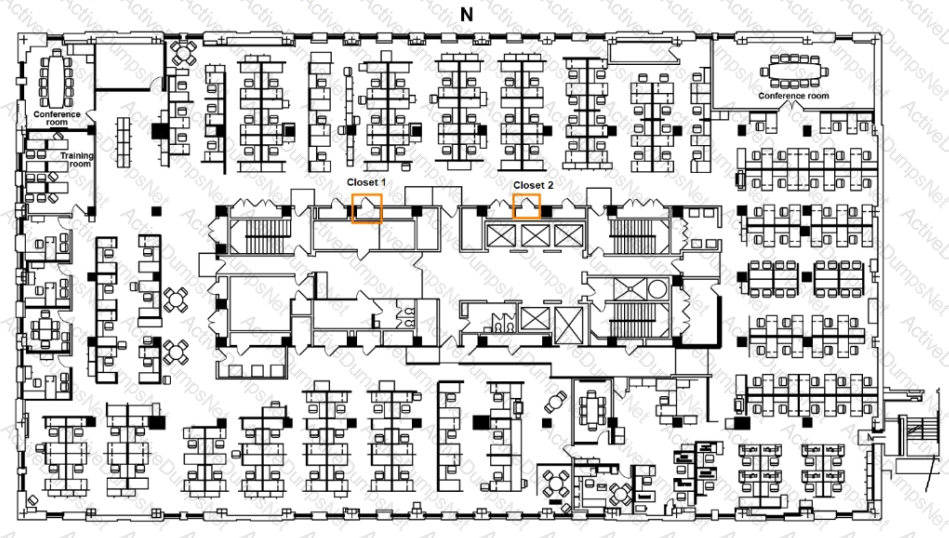HP HPE6-A66 Aruba Certified Design Associate Exam Exam Practice Test
Aruba Certified Design Associate Exam Questions and Answers
NewStellar has a main corporate campus in a business park with two adjacent buildings. Each building has three floors and each floor is 322 x 175 feet (98 x 53 meters) for 56,350 square feet (5,235 square meters) total. The ceiling for each floor is 12 feet (3.6 meters) high with a drop-down ceiling at 10 feet (3 meters). The network architect has given you one floor to analyze, Building 1 Floor 2, shown in the attached exhibit.

This floor has a central main corridor with washrooms, stairs, elevators and supply and network cabinets. There are cubicles around the perimeter of the floor. The central part main corridor's dimensions contain 9,350 square feet (870 square meters). Assuming that wireless coverage is not required in the central area, which square footage (square meter) value should a network architect use when determining the number of APs in a capacity design for each floor?
Which component uniquely defines the BSSID when implementing an employee SSID?
A network architect imports a floorplan defined in a PNG file format What is the function of the measurement tool in Aruba's VisualRF?
A network architect is creating a new wireless solution for a customer. Wireless coverage is required throughout all four floors of two buildings on the same campus. Dynamic RF capabilities, including AirMatch, are required. Seamless roaming is required within and between the two buildings. Each floor will have approximately 20 APs and 6 external APs are required for connectivity between the two buildings.
When a WLAN has to support nomadic devices, a network architect must primarily plan for which component in their design?
When determining a customer's agenda and clarifying their expectations for a new HPE/Aruba deployment, which two questions should be asked during the stakeholder checklist? (Select two.)
What is the main key for a network design to ensure users have a good experience running their applications'?
A customer has a need to track traffic patterns and anomalies on a pair of ArubaOS-CX 8400 series switches. Which technology will the customer need to deploy for these switches?
A company is installing Internet of Things (loT) devices to support a smart and energy-efficient environment for a building, including loT devices for heating and air conditioning, lights, and window shades. loT devices of these types are typically classified as which category of devices?
